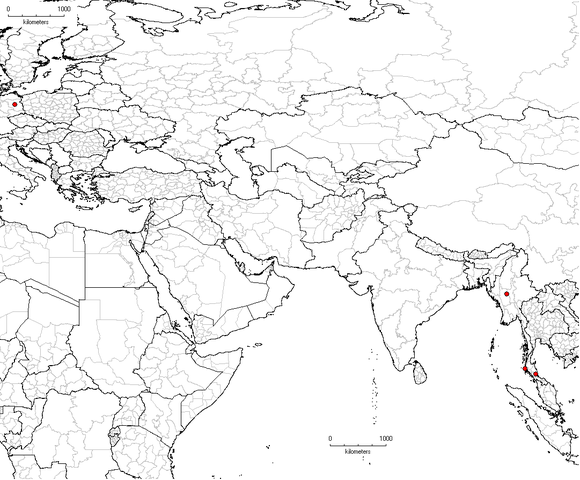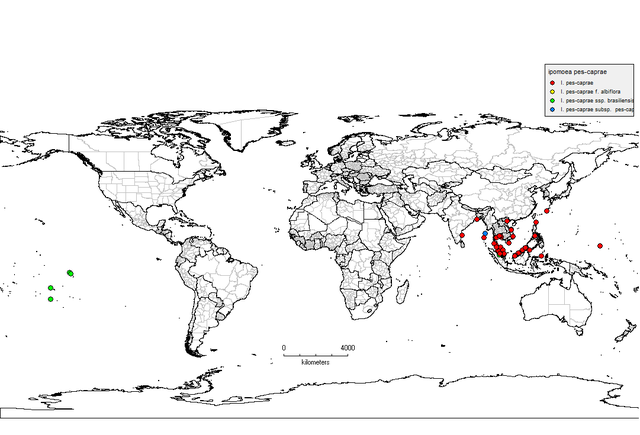Ipomoea sumatrana


China (SE Guangxi, Hainan, Taiwan, S Yunnan), Indonesia, Laos, Malaysia, ?Myanmar, Thailand.
China: Thickets, roadsides,
forest margins; 100–900 m.
Thailand: In evergreen or dry
deciduous forest, dipterocarp forest, or savannah dry forest, often associated
with streams or watercourses and reported on limestone; altitude: 70–820 m.
Ipomoea sumatrana (Miq.) Ooststr., Blumea 3: 571. 1940.
Flowering: September–November; fruiting: November.
Fang R.C., G. Staples, et al. 1995. Convolvulaceae in P. Raven & C.Y. Wu (eds.) Flora of China 16: 271–325.
Staples, G. 2010. Convolvulaceae. Fl. Thailand 10(3): 330–468.
Staples, G. 2010. Convolvulaceae. Fl. Thailand 10(3): 330–468.
Fang R.C., G. Staples, et al. 1995. Convolvulaceae in P. Raven & C.Y. Wu (eds.) Flora of China 16: 271–325.
Lettsomia sumatrana Miq., Fl. Ind. Bat., Suppl. 560. 1860.
Argyreia sumatrana (Miq.) Boerl., Handl. Fl. Ned. Ind. 2: 513. 1899.
I. staphylina Roem. & Schultes var. malayana Prain, J. As. Soc. Bengal 63(2,2): 106. 1894.
Misapplied name: Ipomoea staphylina authors not Roem. & Schult.: e.g., C.B.Clarke, Fl. Brit. Ind. 4: 210. 1883, in part; Gagnep. & Courchet in Lecomte, Fl. Indo-Chine 4: 250. 1915; C.E. Chang, Fl. Taiwan 4: 376. 1978; R.C. Fang & S.H. Huang, Fl. Reip. Pop. Sin. 64(1): 99. 1979.


















There has been persistent confusion in herbaria and in the botanical literature between 3 Asian species: Merremia boisiana; Ipomoea staphylina; and I. sumatrana. Staples (Taiwania 41:185–196. 1996) pointed out the differences and cited relevant specimens, types, and illustrated the characters used to distinguish the 3 inter se.
These 2 Ipomoea species are very similar and at the present level of knowledge seem to be distinct species. Yet they occupy a semi-continuous, vast Asian distribution: Ipomoea staphylina occupies the western side (the Indian subcontinent), while I. sumatrana occupies the eastern side (SE Asia, China, and Malesia). The boundary zone lies in Myanmar (Burma) and W China, and there are so few specimens from this botanically rich but poorly collected region that it is impossible to say if the variation between these 2 is clinal or discrete. When more specimens are available from the boundary zone, it might prove that variation is clinal, with distinct morphotypes at the geographical extremes and continuous variation in the center.